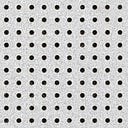Rhino to Ai to PDF
This tutorial explains how are we tracing and drafting an already existed plan in jpeg format and sending it to Ai and then to PDF. We send Rhino file to Ai to check the proper line weights or to add graphics to the drawing.
Part 1 : How to overlay and draft the existing plan.
- Print display is used to check line weights, but usually it is off.
To over lay and trace : Insert the dwg file which is in jpeg format, Type ‘picture frame’ and press shift for the picture to be placed straight. click on picture and change the transparency to 75% in properties bar.
To scale the picture , draw a line from one end other end of any distance and type ‘scale’ and mention the scale.
Add the picture to the layers and lock it.
Add wall sub layer to ANNO and start drafting on the picture.
part 2 : Rhino to Ai
- Select everything you want to export .
2. File>export selected > choose the file location>save as > Adobe Illustrator (Ai)
3. export options : preserve the model scale > and mention the scale.
and select export view port boundaries.
4. open Ai . file>new> set art board size .
file >open >rhino exported file.
5. To edit art board sizes , go to Art boards in properties and we can also add another Art board by clicking new icon for a second board.
6. Edit the file , adjust the line weights if you still have to.
Part 3 : Ai to PDF.
- First save the file and then
- File>Save as > adobe PDF > Select the folder and rename it to get a copy of file.
3. And the Rhino drafted drawing file with the proper line weights will be saved in PDF format .
